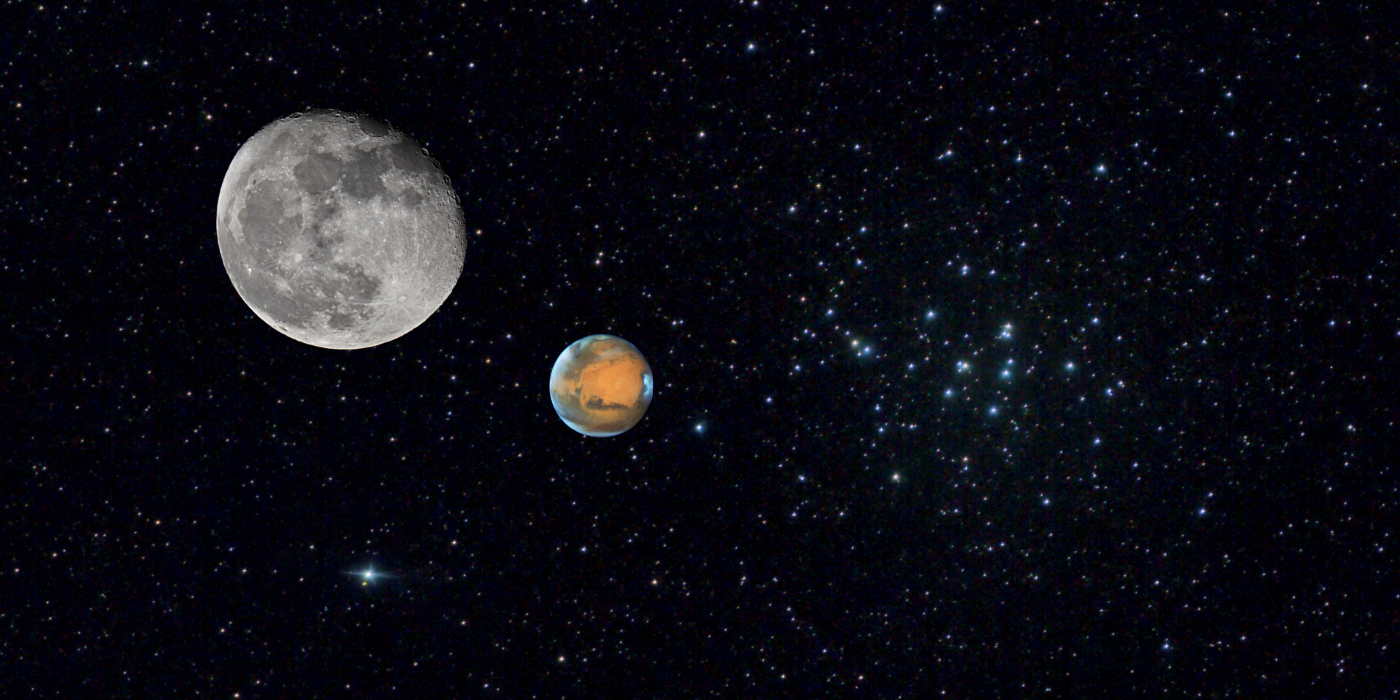| 2024 Dec 17: The Wise Ones at the Manger (2023-12-17) ⬅︎ |
 |
All the planets as well as the Sun and Moon appear to travel along an arc in our sky known as the ecliptic. This path stretches from the eastern to the western horizon and wraps around our planet.
Our ancestors knew this path well and paid particular attention to the constellations that formed the backdrop of the ecliptic. These constellations include Aires (ram), Taurus (bull), Gemini (twins), Cancer (crab), Leo (lion), Virgo (maiden), Libra (scales), Scorpio (scorpion), Sagittarius (archer), Capricorn (goats), Aquarius (water bearer) and Pisces (fishes). Notice that many of these are animals... this is why they were called the constellations of the zodiac for circle of animals.
What seemed intriguing at the time was that the planets, Sun and Moon, all appear to travel at different speeds along the ecliptic. By far the fastest is the Moon which takes only 30 days to make the journey. Mars, on the other hand, is 26 times slower, needing 780 days. Jupiter and Saturn are slower still.
The different speeds mean that the faster worlds catch up to and pass the slower ones. And on rare occasions, when they align like this they also pass famous stellar 'landmarks' such as bright stars or star clusters. These kinds of rare alignments trigger excitement among stargazers.
This is exactly what will be happening on December 17th when Mars and our Moon will appear to visit the famous Beehive Cluster, also known as M44, in the constellation Cancer (crab). But this cluster also has an ancient name: Praesepe, Latin for manger. Since this will be happening right before Christmas of 2024, we can imagine that Mars and Moon are two of the wise men in the Christmas story making their way to the manger where a host of bright, heavenly objects are in attendance.
Stargazers from antiquity have been enjoying this open star cluster because it can be seen naked-eye from a dark site appearing as a dim but tantalizing glow of light. Through a binocular or telescope, one can see a dazzling display of bright stars too close and numerous to count.
On December 17, the moon will be rising just before 7PM in the Starry Hill region. It would be best to wait a couple of hours to give it a chance to rise high before viewing. It should be easy to spot Mars just 36' (arcminutes) below. But since the moon will be so bright (waning gibbous), you will definitely need a binocular or telescope to see M44, 3° further below -- it will visible but washed out in moonlight.
Good luck!
For more info, see
Ecliptic,
Angular Distance, and
Star Guide. |
| |



